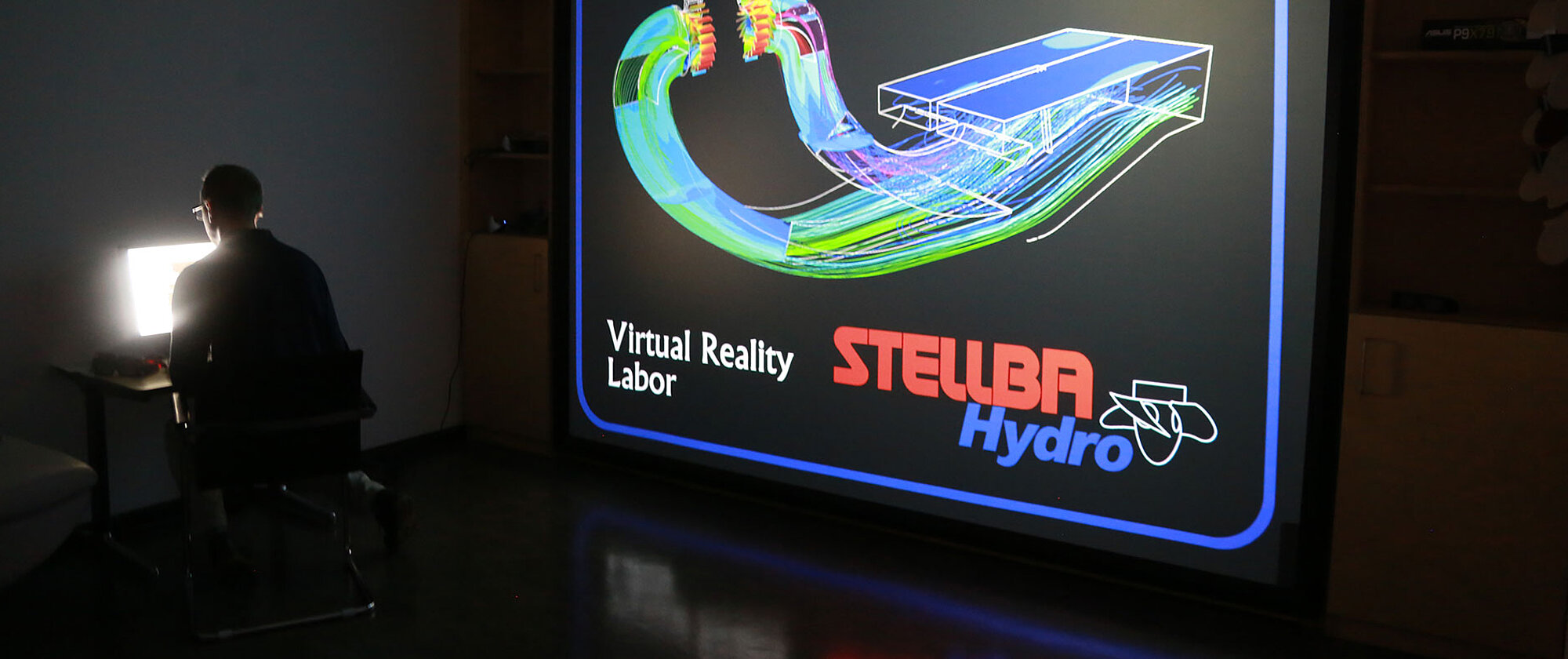Turbine runner, spiral casing & Co
Important terms from A to Z
Hydroelectric power plants can be distinguished according to their design: In Germany, so-called run-of-river power plants are the most frequently used. These are built on rivers and use the kinetic energy of flowing water.
The water first flows into a weir system. This damming creates a difference in height, the head. The river water reaches the power plant through large pipes or tunnels. There it finally meets turbines.
A turbine consists of stationary guide vanes and a rotating runner.
The runner is similar to a ship's propeller and consists of runner blades - also called buckets in Pelton turbines. It is attached to the turbine shaft.
The runner is set in motion by the water flow and drives a generator which, similar to a bicycle dynamo, converts the mechanical energy into electricity.
In turbines with adjustable wicked gate, the guide vanes can be opened and closed to change the flow rate and the angle at which the water meets the runner blades.
The rotation speed of water turbines is usually constant and depends on the number of poles of the generator and the grid frequency.
Impulse turbines such as the Pelton turbine are suitable for high heads and low water volumes.
Inside spiral turbines (e.g. Francis or Kaplan turbines), the water enters through an inlet spiral.
Expansion turbines regulate high pressure energies to operate a generator via a drive shaft.
When water flows through a reaction turbine, it has a higher pressure in front of the runner than behind it.
Bulb turbines, a variant of the Kaplan turbine, have an axial flow and an adjustable runner.
The wicked gate directs the water to the runner by means of a ring of guide vanes ...
In Kaplan turbines, guide vanes and runner blades are adjustable, making it a double-regulated turbine. This means that the turbine has good efficiency over a wide operating range.
Speed-regulated turbines require a frequency converter that first converts the alternating current generated by the turbine at variable frequency into a direct current and then into an alternating current at the grid frequency. This conversion is associated with losses.
If necessary, the electricity produced by the generator is transformed to a different voltage with the help of a transformer and fed into the power grid.
Stellba Hydro GmbH & Co KG I Eiffelstr. 4 I D-89542 Herbrechtingen I Phone +49 7324 96 80 0 I Fax +49 7324 96 80 66 I E-mail: info@stellba-hydro.de

